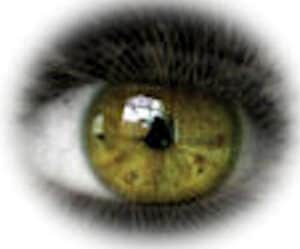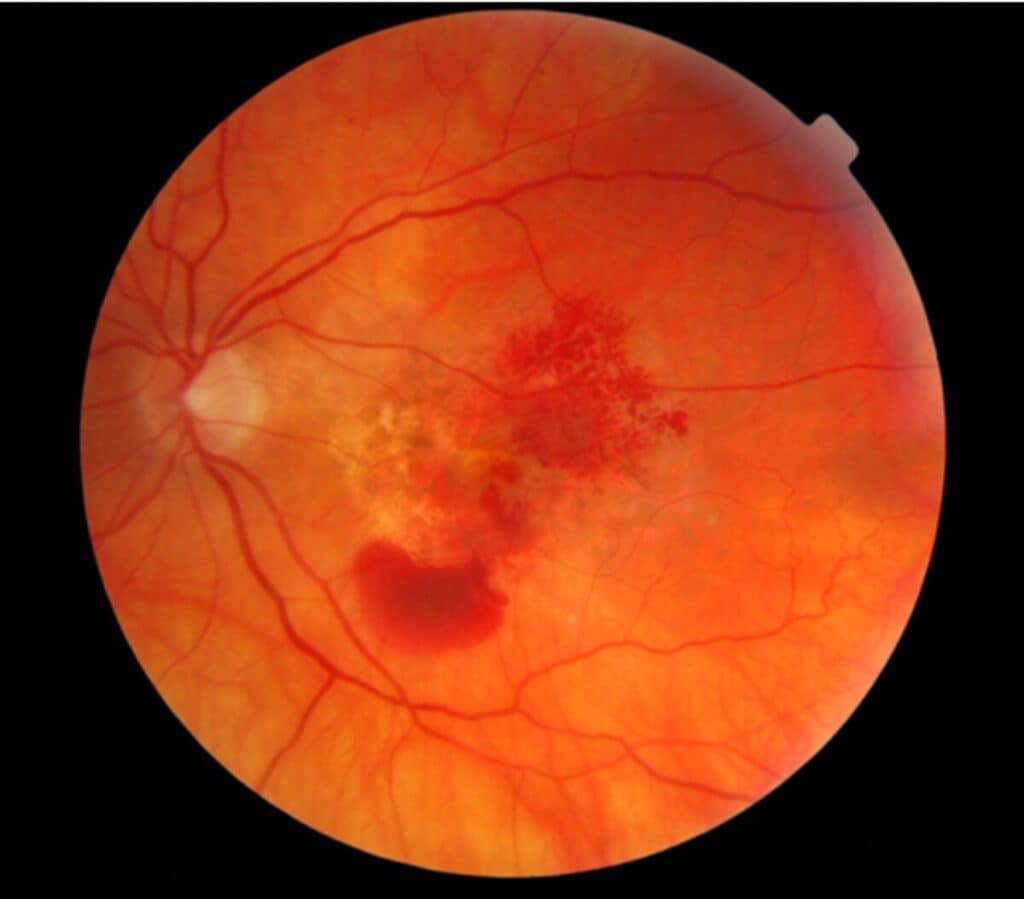When it comes to eye health, researchers have found a link between caffeine and its impact on vision. Caffeine’s ability to block adenosine receptors in both the brain and retinal tissue plays a role in preventing inflammation, a destructive form of disease. This unique property of caffeine not only sheds light on its therapeutic potential but also suggests a beneficial effect on brain and retinal nerve tissue.
Further studies delve into the specifics of how caffeine interacts with our eyes. Research has shown that caffeine’s influence on adenosine receptors contributes to the dilation of blood vessels in the retina, leading to improved blood flow. This enhanced blood circulation is vital for maintaining optimal eye function and health.
Moreover, the antioxidants found in coffee, such as chlorogenic acid and melanoidins, have been linked to reduced risk of age-related macular degeneration (AMD) and cataracts. These antioxidants act as shields against oxidative stress, a major factor in eye diseases. It seems that a moderate intake of caffeine, through coffee or tea, could indeed be a boon for our eyesight in the long run.
Caffeine, Light Flashes, and Blurred Vision
Among the array of visual disturbances, the retinal migraine stands out as one of the most commonly reported, also known as an ocular, visual, or eye migraine. This type differs from the classic migraine, characterized by a visual aura followed by a migraine headache.
Signs and Symptoms of Retinal Migraine:
- Area of blocked, grey or white vision with scintillating ‘broken shards of glass’ flashing lights.
- Starts as a small area and seems to expand until finally dissipating.
- Typically lasts from 5 to 20 minutes.
- Often affects one eye, but often can’t tell if it is one or both eyes.
- May occur multiple times in a single day.
The causes of ocular migraines remain a topic of debate. Most sources suggest it is attributed to a vasospasm of a retinal blood vessel. This reduction in blood flow to the retina can lead to the onset of light flashes and areas of transient vision loss.
Triggers for retinal migraines are varied, from emotional, physical, or chemical:
- Caffeine: caffeinated drinks and chocolate,
- alcohol,
- stress, emotional and events like quitting smoking,
- hypertension,
- hormonal contraceptive pills,
- hypoglycemia (low blood sugar level),
- changing to a higher altitude, and/or
- exercise with overheating and dehydration.
Retinal (ocular, visual, eye) migraines can cause you to be alarmed. They have no known long-term consequences. If these occur frequently, consider lifestyle and dietary changes. If making changes does not help, consider a medical evaluation for health-related concerns.
Caffeine and Eyelid Twitching (MyoKymia)
Frequent inquiries about eye twitching are a common occurrence in my practice. However, it’s important to clarify that technically, it’s not an issue with the eyes themselves, but rather the thin, delicate muscles of the eyelids that are responsible for the twitching.
Myokymia is characterized by the involuntary misfiring of nerves that innervate these fragile eyelid muscles. Individuals may experience episodes of eyelid twitching that persist for days or even months, with the exact causes often remaining a mystery.
Common triggers for myokymia include:
- Caffeine consumption
- Alcohol
- Smoking
- High emotional stress
- Intense physical exertion and fatigue
- Lack of adequate sleep.
Typically, myokymia does not impact vision significantly; it tends to be more of an annoyance than a serious problem. However, if other facial muscles or the deeper eye muscles responsible for eye movements become involved, a medical evaluation is necessary to rule out more serious nerve-related conditions.
Unfortunately, there is no specific treatment for eyelid twitching. However, it’s advisable to consider your dietary intake of caffeine, alcohol, and tobacco, as well as finding ways to reduce stress levels and ensure sufficient rest.
Caffeine and Eye Diseases
Cataracts and Caffeine
Our eyes, much like a camera, feature a clear natural lens positioned behind the pupil, akin to the aperture in a camera. This lens undergoes a natural aging process throughout our lives. In our younger years (under 40 years old), the lens is clear and flexible. However, as we age, it gradually stiffens and undergoes changes. Any alteration that affects the clarity of the lens is referred to as a cataract.
Signs indicating the presence of cataracts include:
- Blurred or cloudy vision
- Seeing halos around lights
- Increased sensitivity to glare in sunlight
- Difficulty seeing in dimly lit environments
- Feeling like your glasses constantly need cleaning.
Globally, cataracts stand as one of the primary causes of vision impairment (according to the World Health Organization), often leading to cataract-induced blindness.
However, age isn’t the sole factor contributing to cataract development. Other factors include:
- Nutritional deficiencies
- Genetics
- High exposure to UV radiation (particularly near the equator)
- Diabetes
- Smoking
In addition to the aging process, these factors can lead to the production of free radicals within the body. Free radicals are molecules generated through metabolic processes. Once formed, they can interact with other cells, potentially causing cellular damage. Such damage to the cells in the lenses of the eyes is a key factor in the development of cataracts.
Researchers have observed that populations consuming coffee exhibit a lower incidence of cataracts compared to those who do not consume coffee (Reference: : “Effect of coffee (caffeine) against cataract blindness.”)
It is believed that caffeine and other antioxidants present in coffee work to reduce the oxidative stress caused by free radicals. Additionally, researchers have suggested the presence of other bioactive factors in coffee that contribute to its effectiveness in reducing the formation of cataracts. These beneficial substances are known as antioxidants.
Caffeine and Diabetic Eye Disease
Diabetes encompasses a group of chronic conditions that impact how the body metabolizes blood sugar, specifically glucose. When the body is unable to effectively utilize blood sugar, it leads to elevated levels of circulating glucose in the blood vessels. Over time, this can result in damage to the integrity of these blood vessels.
Within the eye, the result is diabetic retinopathy, in which blood leaks into the retina. Reduced blood perfusion means less oxygen is available to the retina, prompting the development of more fragile, leaky blood vessels (known as neovascularization) as a response to the low oxygen levels. Diabetic macular edema, characterized by fluid accumulation in the macula, is a significant cause of vision impairment in individuals with diabetic retinopathy. This condition arises from an inflammatory process within the eye.
The effects of caffeine and coffee on diabetic retinopathy are not extensively understood. However, a notable research study highlighted that caffeine can reduce blood vessel permeability. This effect is attributed to caffeine’s ability to block adenosine receptors.
In essence, caffeine blocks adenosine receptors in both the brain and retinal tissue, thereby potentially preventing inflammation. Coffee contains other active ingredients such as vitamins, minerals, and antioxidants. These additional properties of coffee may contribute to decreasing blood vessel leakage and mitigating the inflammatory processes associated with diabetic retinopathy.
Ref: Caffeine Prevents Blood Retinal Barrier Damage in a Model, In Vitro, of Diabetic Macular Edema
Caffeine and Glaucoma
Glaucoma serves as a broad term encompassing various subgroups of eye diseases that lead to optic nerve damage. While it is often simplified as a disease of high eye pressure, the reality is more complex.
This condition silently steals vision; aside from acute forms, there is typically no pain or noticeable visual disturbances.
The core issue in glaucoma lies in the outflow of aqueous fluid from the eye. The eye constantly produces fluid in the anterior chamber, which then flows out of the eye via the bloodstream. Glaucoma arises from a disruption in this fluid outflow process.
The impact of caffeine and coffee on glaucoma remains a topic of debate. Studies have shown a temporary increase in eye pressure following coffee consumption. This increase in pressure is influenced by the quantity of coffee consumed and an individual’s tolerance to caffeine.
The precise mechanism through which caffeine affects eye pressure is not fully elucidated. It is understood to raise blood pressure and constrict retinal blood vessels. Additionally, caffeine is known to increase the production of aqueous fluid in the eye, potentially affecting its outflow.
However, it has not been demonstrated to have an impact on glaucomatous damage in individuals already diagnosed with glaucoma.
A 2019 Korean study suggested a potential link between coffee consumption and an increased risk of open-angle glaucoma, particularly in men. Interestingly, this risk was not observed with tea or soda consumption. (Reference: “The relationship between coffee consumption and open angle glaucoma “)
“)
Research does not suggest that caffeine is a direct cause of glaucoma, nor has it been shown to prevent the condition.
Caffeine and Age-Related Macular Degeneration (AMD)
There is not a lot of studies on the effect of caffeine/coffee and AMD. The best-known study that looked at the effect of coffee consumption and maculopathy was the Beaver Dam Study.
The Beaver Dam Study was a 15-year study of various aspects related to the development of maculopathy of 3,917 persons, 43 to 86 years of age, living in Beaver Dam Wisconsin, starting in 1988.
Results as published by The Beaver Dam Study:
” Men were more likely to be coffee and caffeine drinkers than were women. For both men and women, coffee and caffeine intake decreased with age. Coffee and caffeine consumption was not associated with the 5-year incidence of early age-related maculopathy, soft indistinct drusen, or pigmentary abnormalities.” Ref: The relation of coffee and caffeine to the 5-year incidence of early age-related maculopathy: the Beaver Dam Eye Study
This study suggests that, based on its findings, there is no clear link between coffee or caffeine intake and the development of early age-related maculopathy, a common precursor to AMD.
In the End…
In exploring the intricate relationship between caffeine and the eye, researchers have highlighted a key aspect: caffeine’s influence on adenosine receptors. This mechanism is considered a therapeutic avenue, as it has the potential to prevent neuroinflammation, thereby protecting the nerves. Such findings carry significant implications for individuals with degenerative eye diseases.
Coffee, tea, and chocolate—common sources of caffeine—also contain a range of vitamins, minerals, and antioxidant compounds. These components may play a role in contributing to retinal health, potentially offering additional benefits beyond caffeine’s adenosine receptor-blocking properties.
As research continues to unravel the complexities of caffeine’s effects on eye health, it underscores the importance of moderation and balance in our consumption habits. While caffeine may present promising avenues for protecting the eyes and preserving vision, it is just one piece of the puzzle. A holistic approach to eye health, including a well-rounded diet rich in nutrients, regular eye exams, and a healthy lifestyle, remains crucial for maintaining optimal vision and preventing eye diseases.

“As long as one keeps searching, the answers come.” Joan Baez


